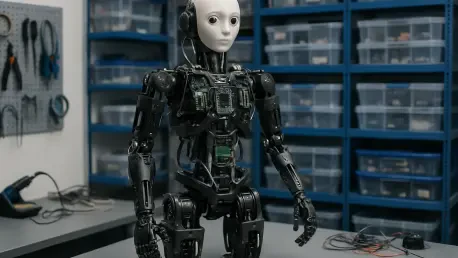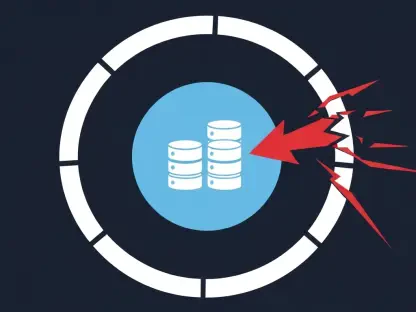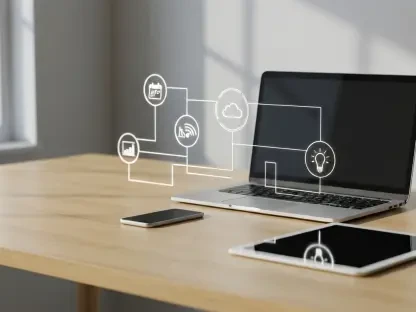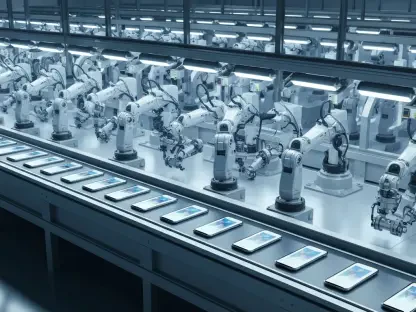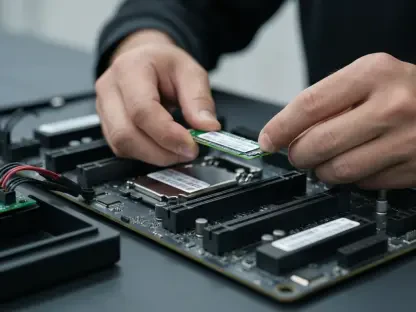Imagine a world where humanoid robots are as ubiquitous and customizable as smartphones, seamlessly integrated into homes, workplaces, and public spaces with the ability to adapt to countless tasks through a unified software platform. This vision is at the heart of a groundbreaking initiative by OpenMind, a company striving to revolutionize the robotics industry by developing an open-source operating system (OS) tailored for humanoid robots. Much like Android transformed the mobile industry by offering a standardized framework, OpenMind aims to accelerate innovation and accessibility in robotics through a common software foundation. The potential for such a platform to unify a fragmented field is generating significant buzz among industry leaders and tech enthusiasts alike. As humanoid robots become increasingly relevant in various sectors, the question remains whether OpenMind can replicate Android’s success and redefine how these machines are developed and deployed.
Shaping a Unified Future for Robotics
Tackling Software Fragmentation
The robotics industry today faces a critical challenge in the form of fragmented software development, where manufacturers often create proprietary systems that limit interoperability and slow down progress. OpenMind is stepping in to address this issue by crafting an open-source OS that can serve as a universal backbone for humanoid robots. This platform promises to eliminate the need for each company to build its software from the ground up, significantly cutting down on time and resources. By providing a standardized system, OpenMind seeks to enable seamless communication between different robot models and brands, fostering a more cohesive ecosystem. The impact of this could be profound, as it would allow developers to focus on creating innovative applications rather than wrestling with underlying compatibility issues. Industry observers note that such a unified approach could be the catalyst needed to propel humanoid robots into mainstream use across diverse environments like factories and households.
Building Strategic Alliances
Beyond just developing a software solution, OpenMind is forging crucial partnerships with leading hardware manufacturers in the robotics sector to test and refine its OS. These collaborations are vital for ensuring that the platform meets the practical demands of real-world applications, from intricate industrial tasks to everyday domestic assistance. Manufacturers are providing invaluable feedback that helps fine-tune the system’s functionality, reliability, and adaptability. This iterative process is designed to create a robust OS capable of supporting a wide range of hardware configurations without sacrificing performance. Additionally, these alliances lend credibility to OpenMind’s vision, as endorsements from established players signal confidence in the platform’s potential to transform the industry. As these partnerships grow, they could pave the way for broader adoption, positioning OpenMind as a central figure in the evolution of humanoid robotics over the coming years.
Fostering Innovation Through Community and Accessibility
Cultivating a Developer Ecosystem
A cornerstone of OpenMind’s strategy is its commitment to building a vibrant developer community around its open-source OS, mirroring the collaborative spirit that fueled Android’s dominance in mobile technology. By making the platform accessible to software engineers worldwide, the company is encouraging contributions in the form of apps, tools, and integrations tailored for humanoid robots. This open approach not only democratizes innovation but also accelerates the creation of diverse functionalities that can be shared across different robot models. The potential for a rich ecosystem of third-party applications could redefine how robots are utilized, making them as versatile as smartphones in terms of customization. Industry analysts suggest that a thriving developer network will be key to unlocking new use cases, from personal assistants to specialized industrial helpers, ensuring that the OS remains dynamic and responsive to emerging needs.
Prioritizing Practical Features for Real-World Impact
Equally important to OpenMind’s mission is the focus on embedding essential features like security, reliability, and ease of updates into its OS, ensuring it can withstand the rigors of practical deployment. Security is paramount, as humanoid robots interacting in sensitive environments must be protected against vulnerabilities that could compromise safety or data integrity. Reliability ensures consistent performance, whether a robot is assisting in a hospital or assembling products on a factory line, while seamless updates keep the system current without disrupting operations. These priorities reflect an understanding that for the platform to gain widespread trust, it must address the real-world challenges faced by manufacturers and end-users alike. By balancing innovation with practicality, OpenMind is laying the groundwork for an OS that not only inspires creativity but also delivers dependable solutions, potentially setting a new standard for how humanoid robots are integrated into daily life.
Reflecting on a Transformative Vision
Looking back, OpenMind embarked on a bold journey to redefine the robotics landscape through its open-source operating system, addressing fragmentation and fostering collaboration in a once-divided field. The strides made in partnering with hardware giants and nurturing a global developer community underscored a commitment to accessibility and innovation. As the industry watched this platform evolve, it became evident that the emphasis on security and reliability tackled critical barriers to adoption. Moving forward, the focus should shift to scaling these efforts, encouraging even more manufacturers to adopt the system, and expanding the range of applications through continued community input. Exploring incentives for smaller companies to join this ecosystem could further democratize access, while ongoing refinements will be essential to meet diverse, evolving demands. OpenMind’s path highlighted a promising blueprint, and the next steps lie in sustaining momentum to ensure humanoid robots become as integral and adaptable as the smartphones that inspired this ambitious endeavor.
